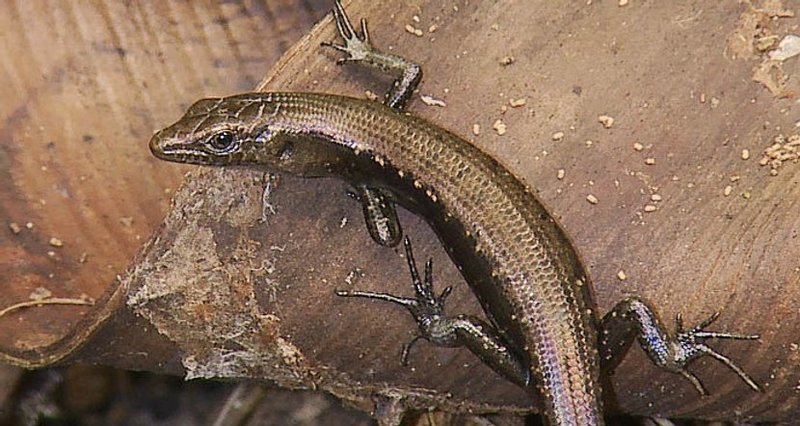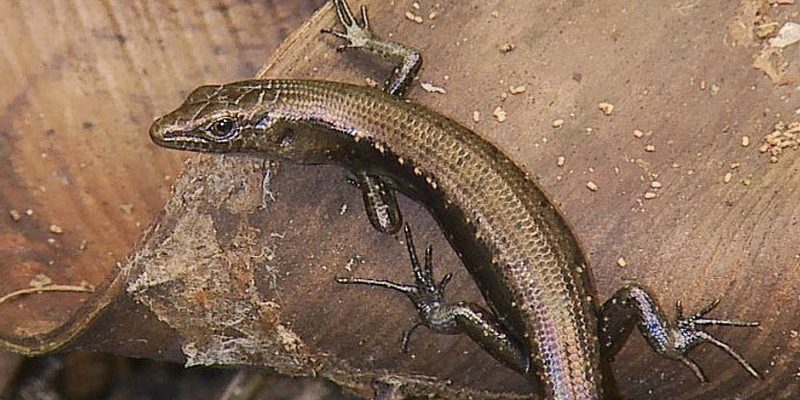
Imagine skinks as the unsung heroes of our ecosystems. They help control pests and are a key part of the food web. But these fascinating reptiles are facing challenges that put their survival at risk. So, what’s going on with skinks? Are they endangered, and if so, what conservation efforts are in place to help them? Let’s explore these questions in detail.
Understanding Skinks: A Closer Look
Skinks are a diverse group of lizards that belong to the family Scincidae. They come in various shapes, sizes, and colors, making them fascinating to observe. You might find them basking in the sun or darting through the underbrush, blending in with their surroundings. One of the unique features of many skinks is their smooth, shiny scales, which can sometimes make them look like they’re made of metal!
These reptiles are primarily found in warm regions, including parts of Australia, New Zealand, and the tropics. With over 1,500 species worldwide, they vary widely in habitat and behavior. Some skinks prefer forested areas, while others thrive in grasslands or deserts. You might be wondering, why should we care about these little creatures? Well, skinks play a vital role in maintaining the balance of their ecosystems.
The Importance of Skinks in the Ecosystem
Skinks help control insect populations by feeding on pests like ants and beetles. Without them, gardens and natural areas could see a boom in these insects, leading to imbalances. Additionally, skinks serve as prey for many larger animals, including birds and snakes. Their presence is a good indicator of a healthy environment. So, when we talk about conservation, we’re not just fighting for skinks; we’re protecting the whole ecosystem they live in.
Unfortunately, skinks are not invincible. Their habitats are increasingly threatened by human activities. As urban areas expand and natural habitats are destroyed, skinks face a tougher fight for survival. This brings us to the next important question: Are skinks endangered?
Are Skinks Endangered? The Current Status
When we talk about endangerment, we often refer to the International Union for Conservation of Nature (IUCN) Red List, a comprehensive resource that assesses the conservation status of different species. The status of skinks can vary widely; some species are considered endangered, while others are thriving.
For example, the Egernia kingii, commonly known as King’s skink, is listed as vulnerable due to habitat loss and predation by invasive species like cats and foxes. On the other hand, the Scincus scincus, or the common skink, is more resilient and not currently at risk. This variability makes it essential to assess each species individually, considering factors like population size, habitat quality, and threats they face.
You might be surprised to learn that skinks are also affected by climate change. As temperatures rise, their habitats shift, and food availability can change. These factors compound the pressures skinks already face from habitat destruction and invasive species, making it vital for conservation efforts to be direct and effective.
Conservation Efforts for Skinks
Now that we understand the challenges facing skinks, let’s discuss what’s being done to help them. Conservation efforts can take many forms, from habitat restoration to legal protections. Here are some key initiatives happening around the world:
- Habitat Restoration: One of the most effective ways to protect skinks is to restore their natural habitats. This involves replanting native vegetation and removing invasive species that threaten their survival. Organizations often engage with local communities to promote sustainable practices that benefit both wildlife and people.
- Legal Protection: In some regions, certain skink species are protected by law, which limits the impact of habitat destruction and exploitation. This legal framework allows for greater protections against activities that can harm their populations.
- Research and Monitoring: Ongoing research is crucial for understanding skink populations and their needs. By monitoring their numbers and habitats, conservationists can respond to emerging threats and adjust strategies as necessary.
It’s important to remember that conservation is not just about saving a single species—it’s about protecting a whole ecosystem. By ensuring skinks have a safe place to thrive, we’re also preserving the balance of nature around them.
Community Involvement in Conservation
Community involvement plays a significant role in the success of conservation efforts. Local residents can help monitor skink populations, participate in habitat restoration projects, and educate others about the importance of these reptiles. Programs that encourage citizen science allow everyday people to contribute to wildlife conservation in meaningful ways.
For example, local schools might organize nature walks to observe skinks in their natural habitat. This not only raises awareness but also fosters a sense of stewardship among future generations. When communities rally around a cause, the impact can be profound.
Challenges Facing Skink Conservation
Despite the efforts being made, skink conservation isn’t without its challenges. Here are a few hurdles that conservationists are currently tackling:
- Invasive Species: As mentioned earlier, foreign predators like cats and rats pose a significant threat to skinks. These invaders often disrupt the natural balance, leading to population declines.
- Habitat Loss: Urban development, agriculture, and deforestation continue to encroach on skink habitats. This not only reduces the available space for skinks to live but also fragments their populations.
- Climate Change: Changes in climate patterns can alter habitats, forcing skinks to adapt rapidly or risk extinction. This makes their survival more precarious.
Addressing these challenges requires a multi-faceted approach that combines habitat protection, legal advocacy, and ongoing research. The more we learn about skinks and the threats they face, the better equipped we will be to foster meaningful change.
The Future of Skinks: What Lies Ahead
Looking ahead, the future of skinks depends on our collective efforts. While some species may remain vulnerable, increased awareness and proactive conservation can pave the way for a healthier population. Many organizations are dedicated to protecting these reptiles, ensuring they remain an integral part of our ecosystems.
What can you do to help? Even small actions can make a difference. Educating yourself and others about skinks, supporting local conservation initiatives, and engaging with wildlife-friendly practices in your everyday life contributes to the larger goal of preserving our planet’s biodiversity.
In the grand tapestry of life on Earth, skinks may seem like small players, but they are crucial for maintaining ecological balance. By understanding the challenges they face and the conservation efforts underway, we can appreciate their role in our world even more.
So, the next time you spot a skink in your garden or on a nature walk, take a moment to reflect on its importance. With each small action, we can contribute to a brighter future for these remarkable reptiles, ensuring they continue to thrive in the wild for generations to come.

